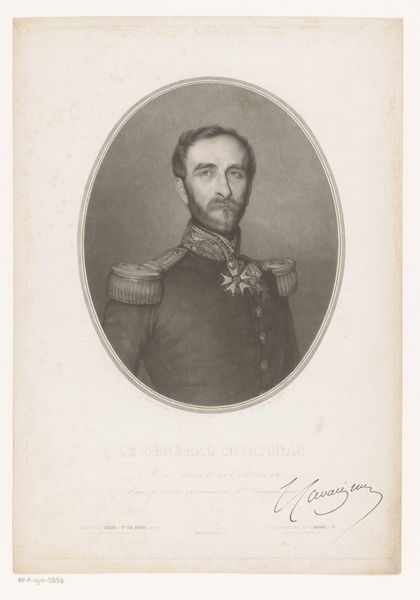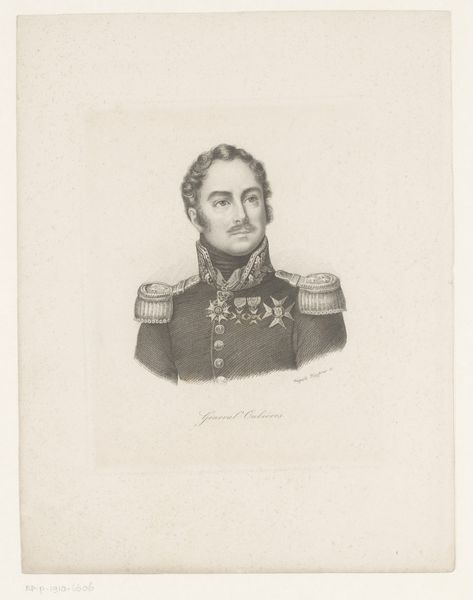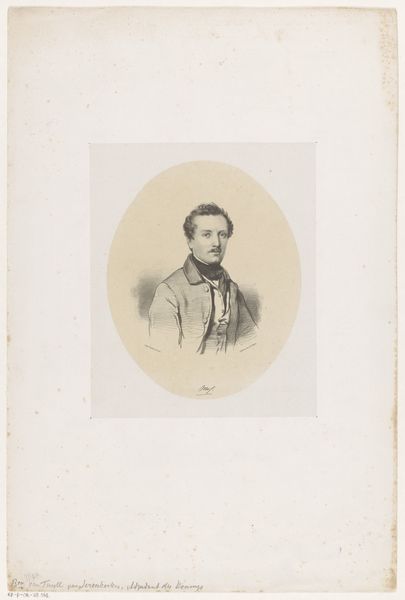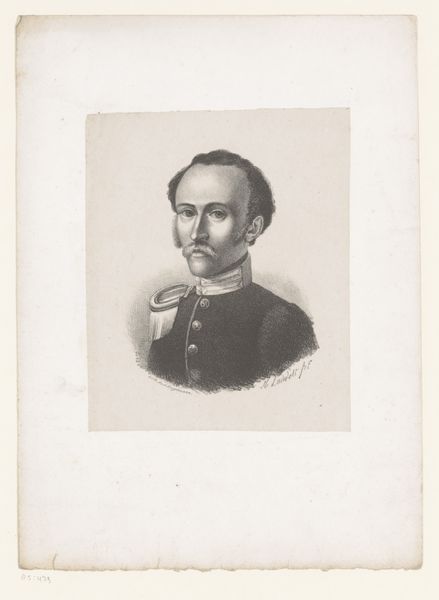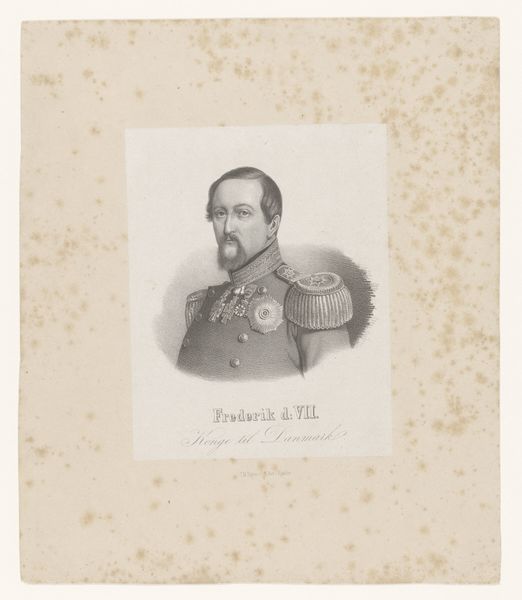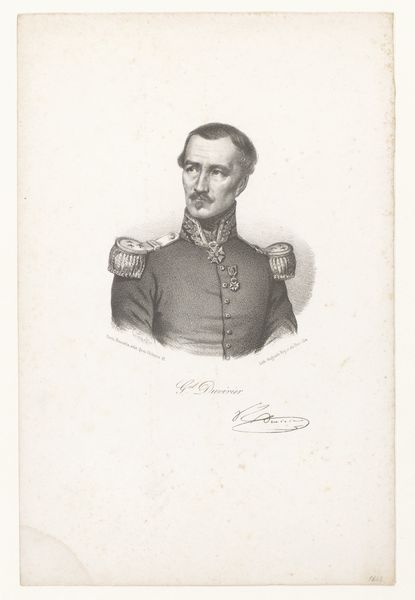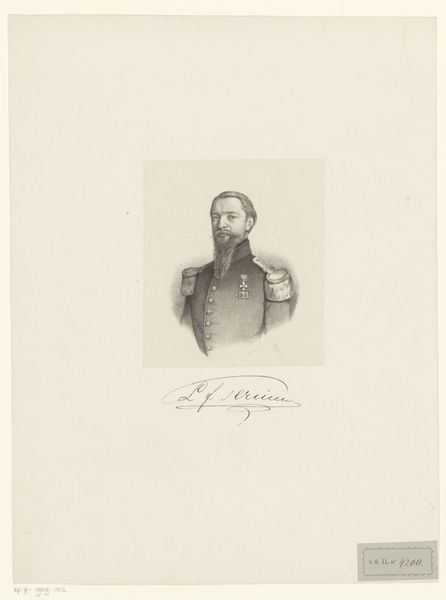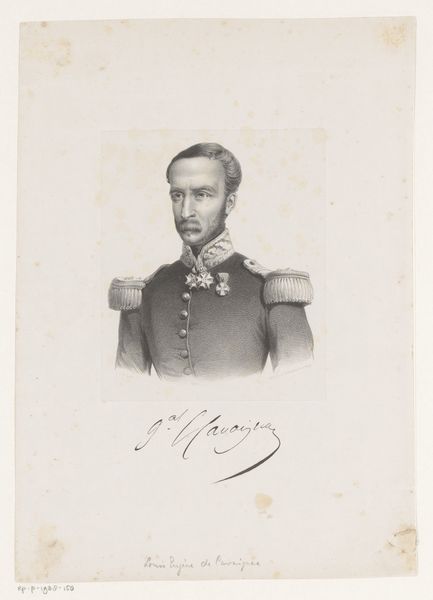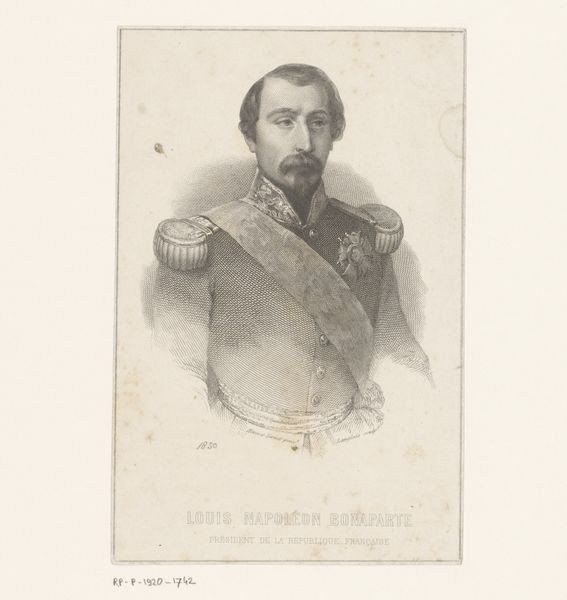
Dimensions: height 470 mm, width 376 mm
Copyright: Rijks Museum: Open Domain
Curator: Before us is "Portret van een onbekende man", or "Portrait of an Unknown Man," thought to have been created around 1860 or 1861. It is a drawing, perhaps a print, of an officer in formal dress. Editor: My first impression is one of faded glory. The monochromatic palette and delicate lines lend an air of quiet contemplation. The paper itself looks aged. Curator: Absolutely. The choice of medium – pencil and engraving – speaks to a particular historical context, the rise of print culture and its impact on portraiture’s accessibility. Such images were increasingly circulating among the middle classes. It served specific purposes regarding public identity and social status. Editor: And how does the subject participate or resist that? The unknown sitter’s very anonymity raises interesting questions about power. He's clearly someone of importance, judging by his uniform and medals, but erased, in some ways, by his namelessness. Who were portraits *for* then, and how did that affect their production? How was this tied into specific gender roles? Curator: Those are key questions. Think about the role of institutions like the military and the kind of identity they fostered – ideas about nationhood, hierarchy, and duty. Portraits served as powerful tools for visualizing and reinforcing these concepts, shaping perceptions within and beyond military circles. How much did he, as an unknown man in uniform, actively shape his portrayal within a structure and an army that sought uniformity? Editor: Right, the inherent tension between individuality and conformity! And even more interesting considering we have so much context, save the identity of this figure. This man's positionality can reveal a lot. Who do you think saw these, and for whom might this image carry social and political significance? Curator: Such images, while accessible, also carried heavy political baggage, reflecting on class, military expansion, and, perhaps, a very particular brand of nationalism in 19th-century Europe. Looking closely at the medals he wears might tell us which specific army or alliance he was connected with, allowing for more nuance when assessing his stance during the time. Editor: Thinking about it this way, even the finest pencil line in an artistic process has embedded cultural history, reflecting specific political, or economic moments, with the simple subject’s name being crucial. Curator: Indeed. It's a testament to how even an "anonymous" portrait can unveil a wealth of information if we critically engage with its visual and historical context.
Comments
No comments
Be the first to comment and join the conversation on the ultimate creative platform.

